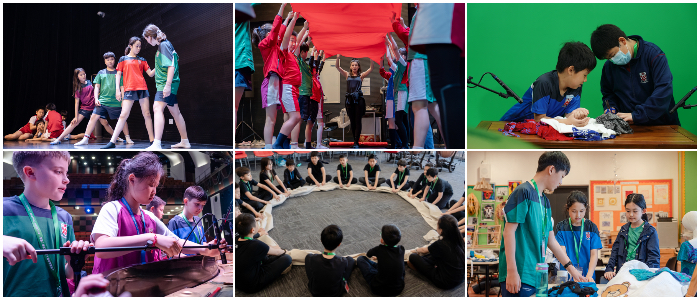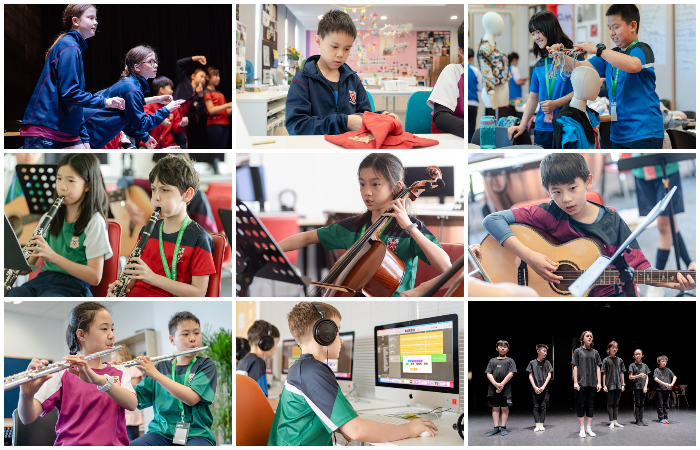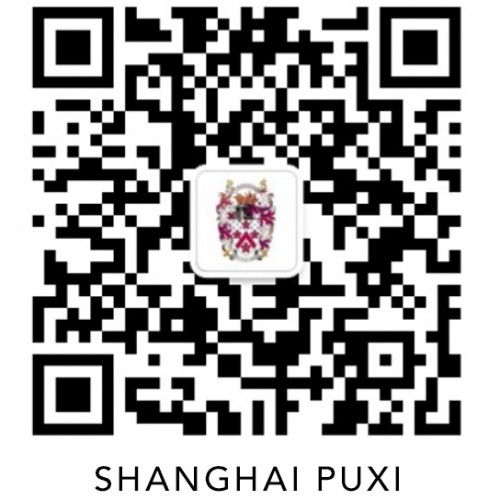MADD about #12: Finding our Tribe through the Creative Arts
“You can be creative in anything – in math, science, engineering, philosophy – as much as you can in music or in painting or in dance.” – Sir Ken Robinson
In his book ‘The Element, How Finding Your Passion Changes Everything’, Sir Ken Robinson champions the power of ‘finding your tribe’ and talks about how being ‘in your element’ drives ‘creativity and passion’. Many of the disciplines within the creative arts are built upon strong collaboration and close relationships. Musicians, theatre casts, dancers, artists, backstage crews and the like, constantly work together to produce something much greater than any one of them could create by themselves – known as the ‘alchemy of synergy’. Robinson attributes this to the fact that ‘creative teams are diverse, dynamic and distinct or purposeful’. When this happens, people feel a sense of belonging and connection, known as finding your tribe.
To help our students develop their passion for anything in life, we must give them the opportunity to experience a wide selection of pursuits from a young age – from computers and sports to the arts and beyond. It is important that they are encouraged to try new things and develop a ‘have-a-go’ attitude to become familiar with things they may not even know they have a passion for! To allow this to happen it is our responsibility as educators to offer these opportunities and encourage students to get involved.

Dulwich College in London has a long-standing tradition of promoting excellence within the performing and creative arts dating back to 1619. Dulwich founder, Edward Alleyne insisted on ‘sound learning and strong artistic pursuits’ in education. Over four hundred years on, there is still a desire to uphold this tradition and as a result there is great emphasis placed on the Creative Arts subjects across the family of Dulwich Schools. The aim of this is to offer all our students access to a high-quality Arts education to instill a lifelong love these subjects.
Dulwich students regularly get to connect with each other and to collaborate with experts in a variety of fields across the creative arts disciplines through our links with world-class practitioners. Our relationships with organisations such as the Royal Shakespeare Company, the Royal Northern College of Music, and ISCMS (International Schools Choral Music Society) offer unique opportunities for our students to study the works master composers, playwrights, artists, choreographers and much more.
In addition to these partnerships, the Dulwich Diversity programme boasts various Creative Arts opportunities for our students to get involved in - these include the Dulwich Festival of Music, Dulwich Shakespeare Festival, the D’Oscars, the Dulwich MADD festival, as well as the Dulwich Science Art Photography Competition.
The most recent festival to take place was the Dulwich MADD Festival. The format of the festival was a combination of online masterclasses and workshops delivered by professional artists, music producers and guest speakers. The students then took inspiration from these sessions and in conjunction with subject leaders, spent time creating music, art, drama and dance pieces all relating to a common theme. The theme was based around the Sustainability Goal #12, Sustainable consumption and production, and the project was called ‘The lifecycle of a garment’.

Across the different disciplines the students had the opportunity to explore and think creatively about the theme. They worked as musicians, artists, dancers and actors to explore, develop and present their thoughts and ideas. In music they produced soundscapes relating to the machines that make the garments, they studied the old-fashioned technique of ‘Waulking the Cloth’ and they played and arranged music for percussion and orchestral instruments. Some students used music technology to record found sounds and then create sequenced music. The artists learned about the sewing and cutting techniques used to stitch clothes and how people from past generations reused and recycled what they wore. The dancer and actors collaborated, starting with improvised movements to choreograph their final piece, using different materials as their stimulus, before finalizing their ideas and presenting in a showcase.
What was evident across the three-day festival was that the students were enjoying being part of their subject areas and having fun! It was a joy to watch them collaborate and listen to the many creative ideas being generated as they made new connections and developed their artistic skills.
The over-arching aim the Creative Arts events is to offer students the chance to experience a range of activities that they would not normally get to do otherwise. By doing so we hope that we can help them ignite their passion, find their tribe and be in their element.






